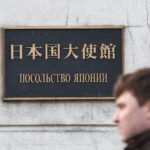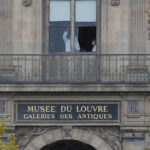More than 200 Moscow residents have begun relocating to a new building on Zarechnaya Street under the renovation program, according to the official website of the Moscow Mayor.
“In the Filevsky Park district, 220 residents from building 7, block 1 on 3rd Filevskaya Street have started moving. The city offered them apartments in the new building at 5 Zarechnaya Street. Thus, since the start of the renovation program, the number of buildings undergoing relocation in this district has reached 14. In total, over 6,500 residents from 35 old buildings will receive new housing here. The renovation program not only improves housing conditions for Muscovites but also serves as an impetus for developing a comfortable urban environment—new infrastructure facilities are appearing near the new buildings,” the statement reads.
Shops, service enterprises, and city organizations will open on the ground floors of the new buildings. A relocation information center is currently operating on the lower floor of the new building on Zarechnaya Street. There, staff will assist new residents with processing housing documents.
“Residents of the five-story building scheduled for demolition began inspecting the city-offered apartments in the building on Zarechnaya Street in September. Many of them preferred to schedule housing inspections through the ‘Relocation under the Renovation Program’ superservice. This option is available to all Moscow residents who have a full account on the mos.ru portal. Through it, necessary documents for preparing the draft apartment agreement can be uploaded remotely, and the time and date for signing can be selected online,” it was clarified.
Near the new building are the Fili metro station, educational and medical institutions, Fili Park, as well as shopping and entertainment centers.
The residential complex on Zarechnaya Street consists of one section with 156 apartments featuring improved finishes. Their total area is over 8,000 square meters. The new building was constructed considering principles of a barrier-free environment. The entrances have wide corridors, and the vestibules and elevator lobby are on the same level, without steps. In the courtyard, pedestrian paths were designed for convenient movement of residents with limited mobility. Comprehensive landscaping was carried out on the territory: trees and shrubs were planted, and children’s and sports playgrounds with safe rubber surfaces were installed.
To make the residents’ move to new apartments under the renovation program comfortable, the city provides movers and transportation free of charge. The “Moving Assistance” service can be ordered on the mos.ru portal or at the relocation information center.
A general guide available in the “Relocation under the Renovation Program” superservice on the mos.ru portal can help prepare for the planned move. With its help, one can learn how the move is organized, get information about the necessary documents for processing the agreement, and use links to useful services. By setting moving parameters, the superservice offers a guide tailored to specific life situations.
The renovation program was approved in August 2017. It affects about one million Moscow residents and involves the resettlement of 5,176 buildings. The Mayor of Moscow instructed to double the pace of its implementation.
Zarechnaya Street
Zarechnaya Street is a common street name found in many cities across Russia and other post-Soviet countries, typically meaning “Trans-river” or “Beyond the river” street, indicating its location across a waterway from a city’s main center. As a result, it does not refer to one specific historic site but represents a type of geographical urban feature. Many of these streets originated as practical routes connecting central areas with outlying districts, often developing alongside industrial or residential expansion.
Filevsky Park district
Filevsky Park is a large recreational area and residential district in western Moscow, built on the site of the former village of Fili. Its most notable historical feature is the 17th-century Church of the Intercession at Fili, a masterpiece of the Naryshkin Baroque style. The district itself was significantly developed with modern residential buildings during the Soviet era, transforming it into the urban park and neighborhood it is today.
3rd Filevskaya Street
3rd Filevskaya Street is a residential street located in the Filevsky Park district of western Moscow. The area is historically significant as the former site of the village of Fili, which is known for the 1812 Council of Fili where Russian commanders decided to abandon Moscow to Napoleon’s army. Today, the street is part of a modern urban neighborhood built during the Soviet era’s mass housing construction campaigns.
Fili metro station
Fili metro station is a station on the Moscow Metro’s Arbatsko-Pokrovskaya Line, located in the west of the city. It opened in 1959 as part of an extension and is notable for its surface-level, open-air design, a rarity for the deep-level metro system built during the Soviet era. The station’s name comes from the historic Fili district, an area known for its role in the 1812 Patriotic War against Napoleon.
Fili Park
Fili Park is a large public park located in western Moscow, Russia, on the historic grounds of the former Fili village. The area is historically significant as the site where the Russian military council, led by Field Marshal Mikhail Kutuzov, made the pivotal 1812 decision to abandon Moscow to Napoleon’s army, a strategic move that ultimately led to the French retreat. Today, the park serves as a popular recreational area with walking paths, sports facilities, and monuments commemorating its history.
mos.ru portal
The mos.ru portal is the official website of the Moscow city government, launched to provide a centralized digital platform for municipal services and information. It has evolved into a comprehensive hub where residents can pay bills, access administrative services, and stay informed about city news and events.
Relocation under the Renovation Program superservice
Based on the name provided, this appears to be a modern service or facility, likely established as part of a “Renovation Program” in a specific country or city. The term “superservice” suggests it is a comprehensive, one-stop center designed to assist residents with the logistics and administrative tasks of relocation, such as finding new housing and managing paperwork. Its history is contemporary, stemming from urban development or housing improvement initiatives in recent years.
Moving Assistance service
A Moving Assistance service is not a physical place or cultural site, but a modern business service that helps individuals and families relocate their belongings. These services, which became widely established in the 20th century with the growth of consumer culture and mobility, handle tasks like packing, loading, transporting, and unloading items. They are a practical response to the logistical challenges of moving homes or offices.





